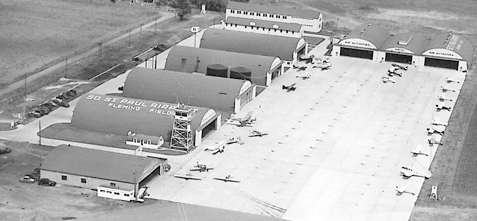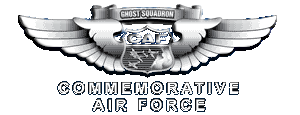Fleming Field
South St. Paul Municipal-Richard E. Fleming Field
Located at 1725 Henry Avenue, South St. Paul, MN Fleming Field is owned and managed by the City of South St. Paul, Minnesota. A ten minute drive from downtown St. Paul and fifteen minutes from the Mall of America in Bloomington, it is a friendly and easily accessible airport. It has a 4,001' paved runway (16/34) with pilot controlled lighting, PAPI for both runways and NDB, localizer and GPS instrument approaches. CTAF is 122.7.
Operations
Fleming Field covers an area of 270 acres and contains one asphalt paved runway designated 16/34 which measures 4,001 x 100 ft (1,220 x 30 m). For the 12-month period ending July 31, 2006, the airport had 51,000 general aviation aircraft operations, an average of 139 per day. There are 217 aircraft based at this airport: 97% single-engine and 3% multi-engine.
Fleming Field is named for Richard Fleming, a Navy pilot during World War II. He was, posthumously, presented the congressional medal of honor for his actions during battle on June 5, 1942. Below is an account of his life and that battle. For 6 months following the attack on Pearl Harbor, Fleming's squadrons patrolled the air near the Midway, never making enemy contact. In his letters, Fleming fretted about spending the war in the backwaters.
This would soon change. On June 4, 1942 Fleming's squadrons were ordered to attack the Japanese Fleet. Scores of American aircraft never returned. Fleming's commanding officer was killed and Fleming's aircraft limped back with 171 holes in it after he failed to drop a bomb on the aircraft carrier Akaqi. Fleming received two slight wounds.
The next day prompted the squadron commander , Captain Fleming, and the remnants of his squadrons to return to the battle.
For 6 months following the attack on Pearl Harbor, Fleming's squadrons patrolled the air near the Midway, never making enemy contact. In his letters, Fleming fretted about spending the war in the backwaters.
This would soon change. On June 4, 1942 Fleming's squadrons were ordered to attack the Japanese Fleet. Scores of American aircraft never returned. Fleming's commanding officer was killed and Fleming's aircraft limped back with 171 holes in it after he failed to drop a bomb on the aircraft carrier Akaqi. Fleming received two slight wounds.
The next day prompted the squadron commander , Captain Fleming, and the remnants of his squadrons to return to the battle.  Fleming directed his aircraft in a screaming dive at the Japanese cruiser Mikuma. The enemy ship was struck with the bomb, then by Fleming's plane. A Japanese officer later wrote that it was a suicide bombing.
There was a tremendous blast as the gasoline from Fleming's plane flowed down into the Mikuma's engine room where the fumes ignited and exploded, killing the entire engine room crew. The Mikuma, now gutted and helpless, laid wallowing in the water. The following day U.S. bombers found the helpless cruisers and the Mikuma, which later rolled over and sank.
Captain Richard Fleming was the only man to win the Congressional Medal of Honor during this crucial battle.
Fleming directed his aircraft in a screaming dive at the Japanese cruiser Mikuma. The enemy ship was struck with the bomb, then by Fleming's plane. A Japanese officer later wrote that it was a suicide bombing.
There was a tremendous blast as the gasoline from Fleming's plane flowed down into the Mikuma's engine room where the fumes ignited and exploded, killing the entire engine room crew. The Mikuma, now gutted and helpless, laid wallowing in the water. The following day U.S. bombers found the helpless cruisers and the Mikuma, which later rolled over and sank.
Captain Richard Fleming was the only man to win the Congressional Medal of Honor during this crucial battle.

